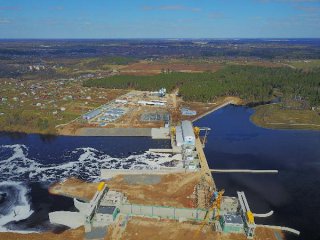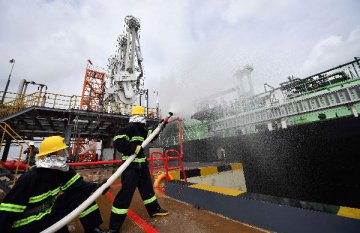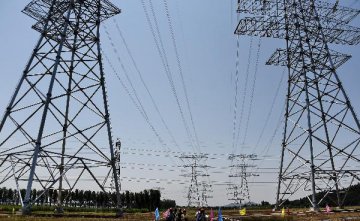
The world’s biggest shipbuilder sees China’s cleanup of its smoggy skies lifting prices of the vessels this year.
As China prioritizes dealing with the smog that has famously blanketed Beijing and other big cities, the world’s second-biggest economy is increasingly turning to liquefied natural gas as a replacement for coal for heating and other purposes, boosting imports of the cleaner fuel. Hyundai Heavy Industries Co. expects orders for carriers of the gas to lead demand for new ships, Chief Executive Officer Sam H. Ka said.
“China’s need for LNG appears to have triggered the restart of some gas projects in the U.S., Australia and Qatar,” Ka said in a phone interview from Seoul. “Our slots for LNG-carrier construction are pretty much filled up until 2021.”
Surging demand for LNG in China, as well as in smaller emerging economies, has spurred energy explorers including Royal Dutch Shell Plc and Total SA to focus on investments in gas development projects. The accompanying demand for carriers to transport the fuel is a bright spot for the shipbuilding industry that has struggled to win orders since crude oil prices slumped in 2014. Qatar plans to order about 60 new LNG carriers, adding to the 50 it already owns, according to Energy Minister Saad Sherida Al Kaabi.
Ka expects the rising demand will benefit the world’s top three shipyards, which are all based in South Korea. Gas carriers are the most expensive commercial ships and take the longest time to build.
“This is a good start to the new year with clear signs of strong demand for LNG carriers,” said Um Kyung-a, an analyst at Shinyoung Securities Co. in Seoul. “As more and more slots get filled with LNG carrier orders, it’s going to enable shipyards to raise prices for all types of vessels.”
Hyundai Heavy, Samsung Heavy Industries Co. and Daewoo Shipbuilding & Marine Engineering Co., together with other smaller South Korean shipyards, won 94 percent of the 80 LNG carriers ordered worldwide last year, according to the country’s Ministry of Trade, Industry and Energy. The companies also account for 87 percent of Very Large Crude Carriers ordered globally.
These helped increase their order backlog by 25 percent last year and will allow them to raise prices for vessels, Ka said on Jan. 24. The executive predicted that average prices for ships built by Hyundai Heavy and its rivals could climb 10 percent this year following a 10 percent increase in 2018.
Continued Recovery
In the three years through 2007, the world’s three biggest shipbuilders won orders from Qatar to build more than 40 LNG carriers.
Ka expects the global shipbuilding industry to continue on a gradual recovery over the next few years. Orders could exceed 60 million gross tons, which measures the volume of space in a ship, rising from a little more than 55 million tons estimated for last year.
Hyundai Heavy could report better earnings for 2019, helped by prices of steel plates that are expected to stagnate or rise moderately this year, Ka said. Prices of the material, used to make the hull of ships, rose more than 30 percent last year, contributing to a nine-month net loss of 274.8 billion won ($246 million) at the company, which is scheduled to report full-year results this week.
Source: Bloomberg
Translated by Jennifer
























Latest comments